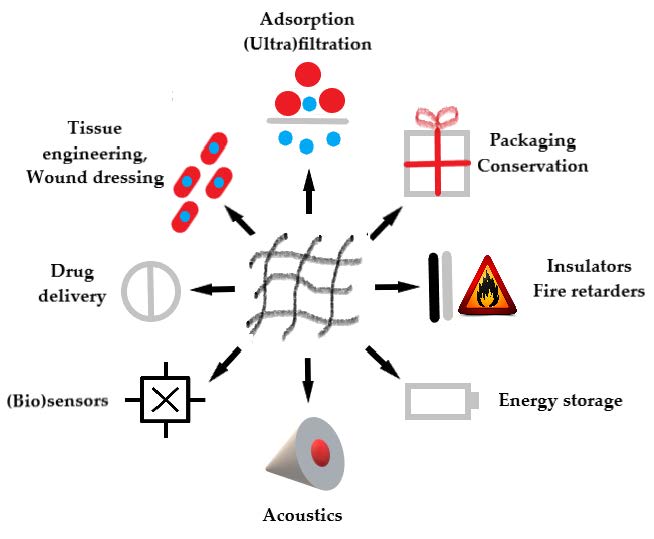Nanocellulose is cellulose in the form of nanostructures, i.e. features not exceeding 100 nm at least in one dimension. These nanostructures include nanofibrils, e.g. in bacterial cellulose; nanofibers, e.g. in electrospun matrices; nanowhiskers and nanocrystals. These structures can be further assembled into bigger 2D and 3D nano-, micro- and macro-structures, such as nanoplatelets, membranes, films, microparticles and porous macroscopic matrices. There are four main sources of nanocellulose: bacteria (Gluonacetobacter), plants (trees, shrubs, herbs), algae (Cladophora) and animals (Tunicata). Nanocellulose has emerged for a wide range of industrial, technology and biomedical applications, e.g. for adsorption, ultrafiltration, packaging, conservation of historical artifacts, thermal insulation and fire retardation, energy extraction and storage, acoustics, sensorics, controlled drug delivery, and particularly for tissue engineering. Nanocellulose is promising for use in scaffolds for engineering of blood vessels, neural tissue, bone, cartilage, liver, adipose tissue, urethra and dura mater, for repairing connective tissue and congenital heart defects, and for constructing contact lenses and protective barriers. This review is focused on applications of nanocellulose in skin tissue engineering and wound healing as a scaffold for cell growth, for delivering cells into wounds, and as a material for advanced wound dressings coupled with drug delivery, transparency and sensorics. Potential cytotoxicity and immunogenicity of nanocellulose are also discussed.

